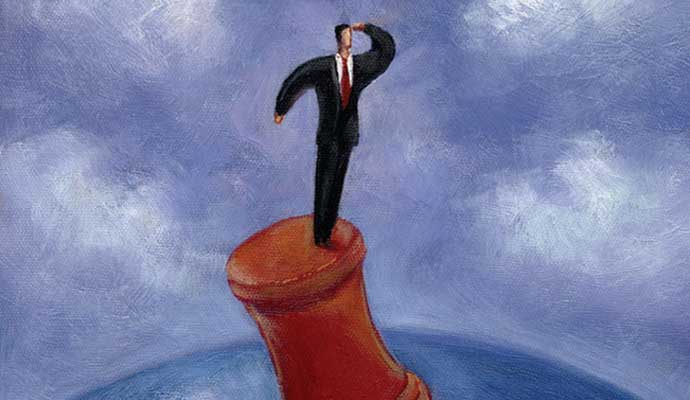Skill or Luck?
A review of The Success Equation: Untangling Skill and Luck in Business, Sports, and Investing, by Michael J. Mauboussin.
(originally published by Booz & Company)The Success Equation: Untangling Skill and Luck in Business, Sports, and Investing
by Michael J. Mauboussin,
Harvard Business Review Press, 2012
Humans are compulsive makers of meaning. The notion that the universe is random and that our activities might be insignificant is profoundly disturbing to us. So we construct webs of cause and effect to explain events and reassure ourselves that we are in charge of our lives. In doing so, says Michael J. Mauboussin, chief investment strategist at Legg Mason Capital Management, we often confuse skill and luck, setting ourselves up for future failures.
Mauboussin’s new book, The Success Equation: Untangling Skill and Luck in Business, Sports, and Investing, aims to help us untangle the two. It offers this rough-and-ready test for discerning the difference between skill and luck in any given event: Ask yourself if you can lose on purpose. If you can, skill is involved; if you can’t, it’s pure luck. For a more mathematical assessment, figure out the correlation between a supposed cause and its effect. If the correlation is high, the cause is likely related to a skill, and a good process will usually have a good outcome. If the correlation is low, luck plays a larger role in the outcome, and a good process will produce good results only over time—a feature of the investment field, where luck features prominently in short-term results.
Statistics play a large role in the book, but as its subtitle promises, Mauboussin illuminates the math with stories from business, sports, and investing. The first three chapters explain why even the most sophisticated researchers can have a hard time distinguishing between luck and skill. The results of observational studies in medical research, for example, are either false or significantly exaggerated more than 80 percent of the time. More rigorous, randomized studies prove to be more valid, but even their results are flawed 25 percent of the time.
In the next four chapters, Mauboussin discusses the analytical tools required to distinguish skill from luck and to better understand the “arc of skill,” that is, how skill declines over time. He predicts that outfielder Jayson Werth, who, in 2011 at age 31, received a US$126 million, seven-year contract from the Washington Nationals, will prove a poor investment: The performance of baseball players peaks when they are between the ages of 27 and 29, and declines thereafter. Similarly, statistical analysis offers clear evidence that corporate performance follows a predictable life cycle, falling prey to organizational rigidities as companies age.
In the book’s last four chapters, Mauboussin makes practical recommendations for business leaders. For example, managers should make sure that their statistics are reliable and valid. He notes that 70 percent of companies don’t know if their nonfinancial measures are stable and predictive of the outcomes they want. They should also be aware of reversion to the mean. When an activity is a mixture of luck and skill, extreme performances, either good or bad, tend to be followed by less extreme ones—hence, they tend to revert to the mean. So, if you praise someone for a good performance and his subsequent performance declines or if you criticize someone for a bad performance and he improves, you might conclude that your intervention had been counterproductive in the former case and beneficial in the latter. And you could be wrong in both cases!
Mauboussin goes on to advise leaders to match their improvement technique to the situation. When skill plays a large role in an activity, you can affect outcomes with deliberate practice and timely, specific feedback. When luck predominates, however, you should concentrate on the process to ensure acceptable results over the long run. Use checklists to help focus attention on the process and ensure that it is followed. Moreover, leaders should choose their competitive responses based on their strength relative to their opponent’s in a specific situation. When you are stronger than your opponent, restrict the number and variety of encounters, and keep the game simple. When you are weaker, increase the number of encounters and complicate the game.
These ideas may already be familiar to some readers; indeed, there is little in The Success Equation that has not been said before in other works. (The book also gives no “equation” for success.) Nevertheless, the clarity of Mauboussin’s writing and the quality of the examples make the book a worthy addition to the managerial library. ![]()
Author profile:
- David K. Hurst is a contributing editor of s+b. His latest book is The New Ecology of Leadership: Business Mastery in a Chaotic World (Columbia Business School Publishing, 2012).



